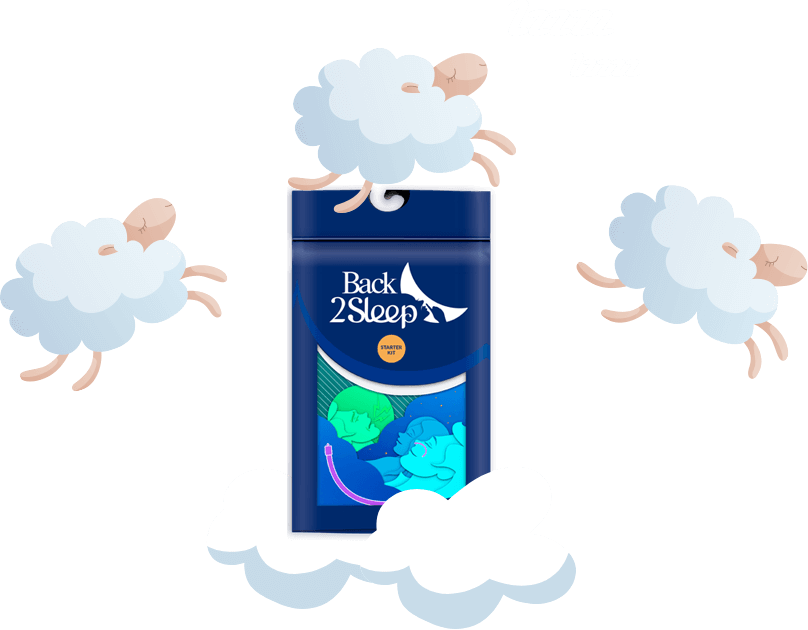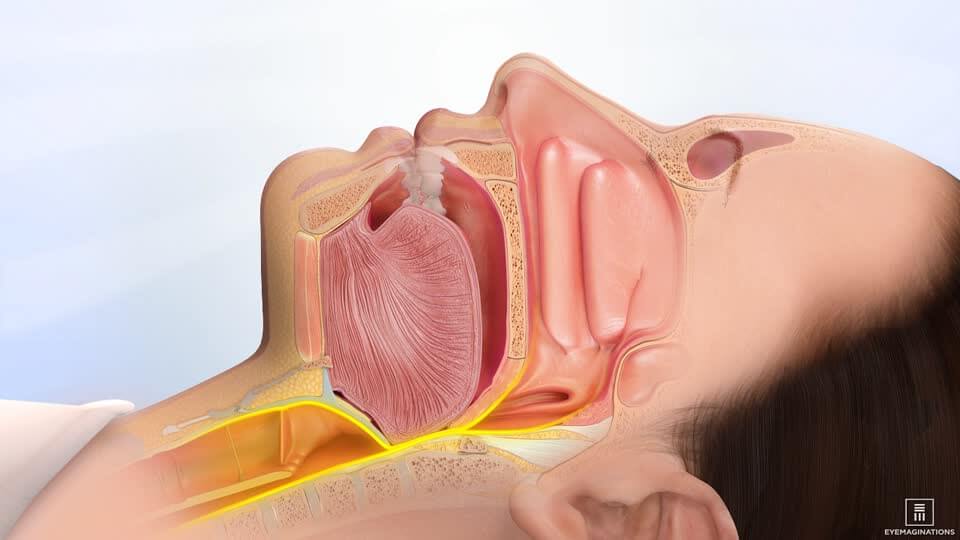Sleep apnea, or obstructive sleep apnea syndrome (OSAS), is a sleep disorder that causes breathing interruptions.
Sleep apnea severely impacts the quality of life and health of millions of people.
The obstruction of the upper airways often leads to cardiovascular complications, so it is advisable to get diagnosed as soon as symptoms appear.
Who should you consult for sleep apnea? Your general practitioner will always guide you to a specialist, who may be a cardiologist, pulmonologist, ENT specialist, or sometimes even a dentist, depending on the case.
The specialist usually recommends a sleep assessment, beginning with nocturnal ventilatory polygraphy and, if needed, proceeding to a polysomnography.
To learn more, follow this guide!
What Are the Symptoms That Require a Consultation for Sleep Apnea?
If you experience chronic fatigue, restless sleep, daytime drowsiness, or loud snoring, there’s a good chance you are experiencing breathing interruptions during sleep, indicative of sleep apnea.
To confirm suspected sleep apnea, discuss your symptoms and persistent fatigue with your general practitioner.
Sleep apnea increases the risk of cardiovascular diseases, strokes, and high blood pressure, making a diagnosis crucial.
This condition is characterized by frequent nighttime breathing pauses during sleep.
Your general practitioner will determine which specialist to refer you to for sleep apnea diagnosis, with possible options including:
- ENT Specialist (Otorhinolaryngologist): An expert in the upper airways and snoring.
- Pulmonologist: A respiratory specialist experienced in diagnosing sleep apnea.
- Cardiologist: Consulted in cases of cardiovascular signs or complications.
- Dentist: Recommended for maxillofacial issues or to consider wearing an orthotic device.
- Neurologist: For central apnea, persistent insomnia, or restless leg syndrome, a neurologist can address neurological issues associated with sleep apnea.
These specialists will arrange sleep evaluations through two potential tests: nocturnal ventilatory polygraphy and/or polysomnography.
How Is Sleep Apnea Testing Conducted?
Initial screening can be done at home using a portable device provided to patients with symptoms suggestive of sleep apnea.
Sometimes, screening is performed overnight in a laboratory, clinic, hospital, or sleep center.
This process involves nocturnal ventilatory polygraphy.
If necessary, a more in-depth test called polysomnography—an overnight evaluation at a hospital or sleep center—may be conducted.
What Is Nocturnal Ventilatory Polygraphy?
During a sleep apnea consultation, the specialist explains how the tests will be conducted.
Nocturnal ventilatory polygraphy is often the first test in diagnosing sleep apnea.
The patient undergoes an electrocardiogram to measure breathing movements and airflow. The test also monitors blood oxygen saturation levels using:
- An abdominal and thoracic belt to record nocturnal respiratory movements.
- A pulse oximeter on the fingertip to analyze blood oxygen levels.
- A nasal cannula to capture airflow during nocturnal breathing.
All these sensors connect to an electronic device worn on the chest, which collects data for later analysis by the specialist. Setting up this equipment takes about 10 minutes.
What Is Polysomnography?
Polysomnography is a more comprehensive test performed for sleep apnea evaluation.
This examination is conducted during an overnight hospital stay, sleep laboratory, or sleep center visit.
Various sensors are placed on the patient to monitor:
- The heart with an electrocardiogram (ECG).
- Respiratory movements.
- Airflow and oxygen saturation levels.
Electrodes attached to the body also record brain activity (electroencephalogram), muscle activity (electromyogram), and eye movements (electro-oculogram). These tests help diagnose or rule out sleep apnea.
Sometimes, if initial results are inconclusive, further testing is performed.
What Tests Can an ENT Specialist Perform?
An ENT specialist examines the pharynx, uvula, tonsils, and tongue.
They check the nasal septum, turbinates, and any nasal obstruction contributing to sleep apnea.
The ENT specialist assesses the airways to diagnose or rule out sleep apnea. They may recommend treatments such as wearing a mouthguard to advance the jaw and prevent the tongue from obstructing the throat.
When Should You See a Pulmonologist for Sleep Apnea?
For respiratory and sleep disorders, a pulmonologist specializing in OSAS can diagnose sleep apnea using polysomnography.
They may also prescribe treatments such as CPAP (continuous positive airway pressure) devices and dental orthotics.
Conclusion
Your general practitioner is the first point of contact for symptoms indicative of sleep apnea.
Depending on the individual case, they may refer you to an ENT specialist, cardiologist, pulmonologist, neurologist, or dentist for issues like maxillofacial malformations requiring orthotics.
In some cases, patients are referred to sleep centers that house all relevant specialties.
Sleep apnea can have serious consequences, so early diagnosis is crucial for effective treatment and improved quality of life.
When sleep is disrupted, the entire body suffers—never take sleep apnea lightly!
FAQ
Which doctor should I consult for sleep apnea?
For suspected sleep apnea, your general practitioner may refer you to a pulmonologist, cardiologist, ENT specialist, neurologist, or dentist, depending on the initial diagnosis.
Where can I get tested for sleep apnea?
Discuss symptoms with your general practitioner, who will refer you to the appropriate specialist. Only a sleep specialist can diagnose OSAS.
What ENT exams are conducted for sleep apnea?
The ENT examination assesses the pharynx, uvula, tonsils, tongue, nasal septum, and turbinates to identify nasal obstructions or other factors contributing to sleep apnea.
What happens during a sleep apnea consultation?
During sleep apnea consultations, sensors are placed on the head, chest, abdomen, and legs. While polygraphy does not record sleep, polysomnography confirms results if apnea/hypopnea events per hour are below 30.








